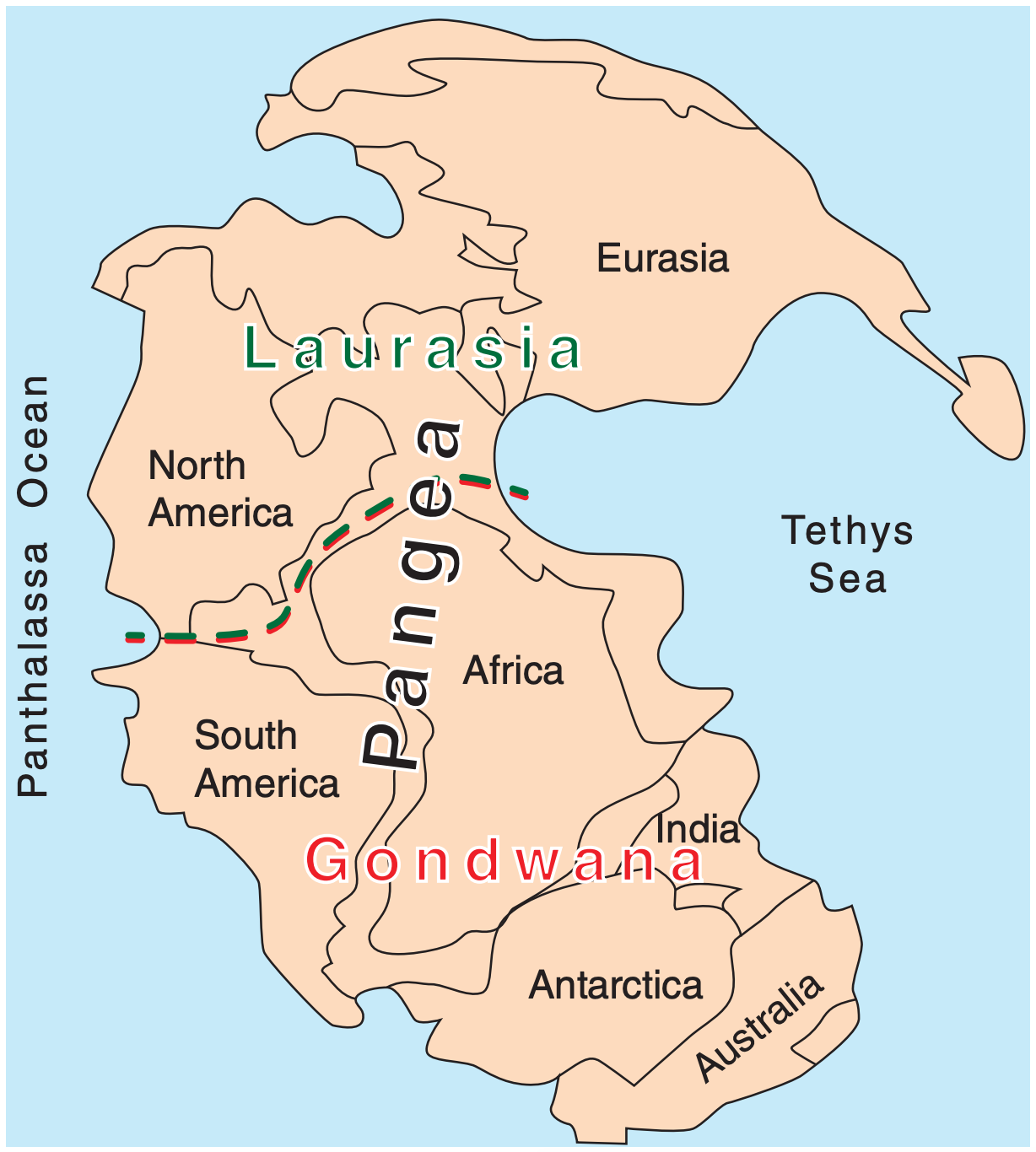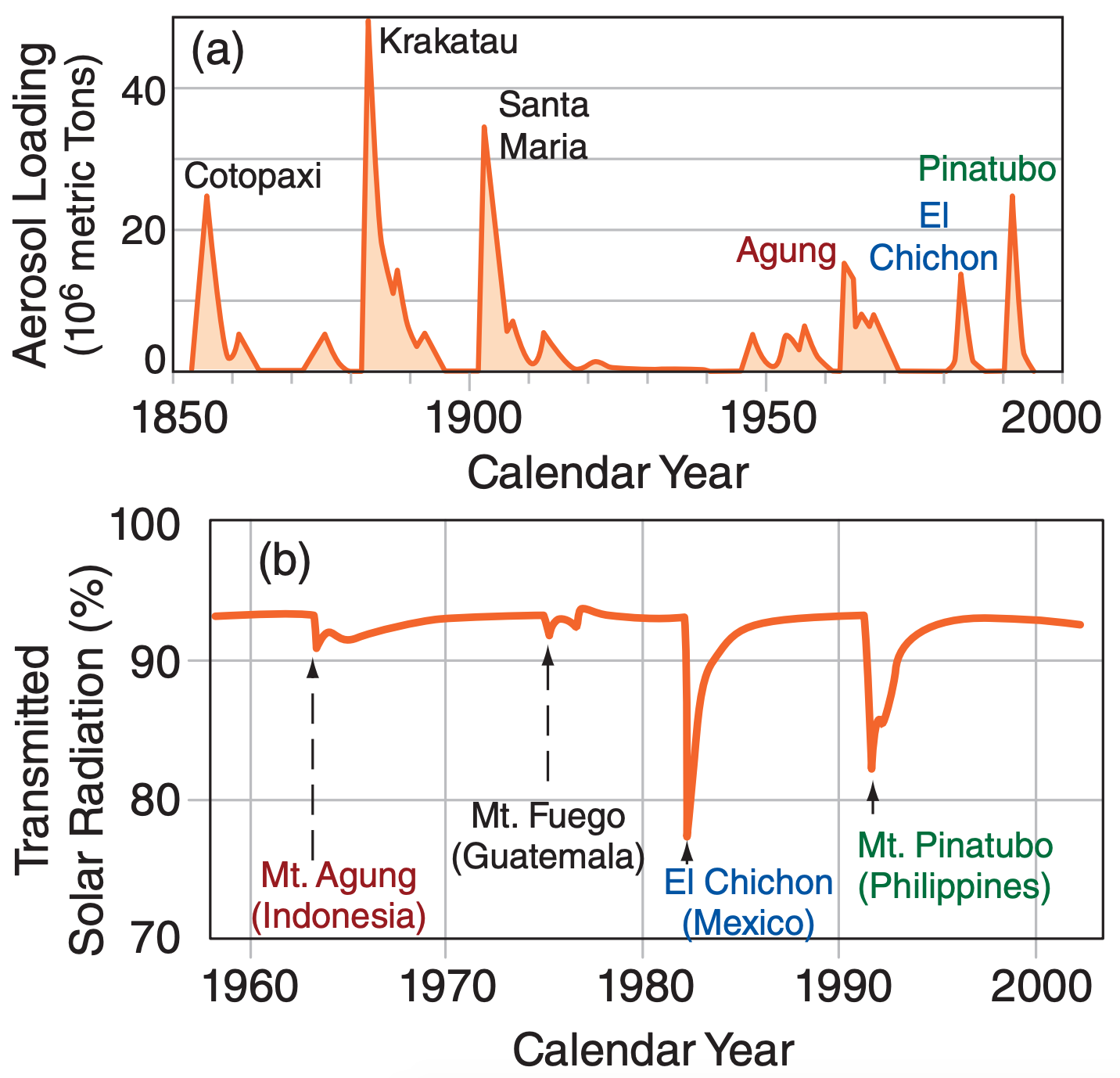21.3: Tectonic Influences
- Page ID
- 10191
\( \newcommand{\vecs}[1]{\overset { \scriptstyle \rightharpoonup} {\mathbf{#1}} } \)
\( \newcommand{\vecd}[1]{\overset{-\!-\!\rightharpoonup}{\vphantom{a}\smash {#1}}} \)
\( \newcommand{\id}{\mathrm{id}}\) \( \newcommand{\Span}{\mathrm{span}}\)
( \newcommand{\kernel}{\mathrm{null}\,}\) \( \newcommand{\range}{\mathrm{range}\,}\)
\( \newcommand{\RealPart}{\mathrm{Re}}\) \( \newcommand{\ImaginaryPart}{\mathrm{Im}}\)
\( \newcommand{\Argument}{\mathrm{Arg}}\) \( \newcommand{\norm}[1]{\| #1 \|}\)
\( \newcommand{\inner}[2]{\langle #1, #2 \rangle}\)
\( \newcommand{\Span}{\mathrm{span}}\)
\( \newcommand{\id}{\mathrm{id}}\)
\( \newcommand{\Span}{\mathrm{span}}\)
\( \newcommand{\kernel}{\mathrm{null}\,}\)
\( \newcommand{\range}{\mathrm{range}\,}\)
\( \newcommand{\RealPart}{\mathrm{Re}}\)
\( \newcommand{\ImaginaryPart}{\mathrm{Im}}\)
\( \newcommand{\Argument}{\mathrm{Arg}}\)
\( \newcommand{\norm}[1]{\| #1 \|}\)
\( \newcommand{\inner}[2]{\langle #1, #2 \rangle}\)
\( \newcommand{\Span}{\mathrm{span}}\) \( \newcommand{\AA}{\unicode[.8,0]{x212B}}\)
\( \newcommand{\vectorA}[1]{\vec{#1}} % arrow\)
\( \newcommand{\vectorAt}[1]{\vec{\text{#1}}} % arrow\)
\( \newcommand{\vectorB}[1]{\overset { \scriptstyle \rightharpoonup} {\mathbf{#1}} } \)
\( \newcommand{\vectorC}[1]{\textbf{#1}} \)
\( \newcommand{\vectorD}[1]{\overrightarrow{#1}} \)
\( \newcommand{\vectorDt}[1]{\overrightarrow{\text{#1}}} \)
\( \newcommand{\vectE}[1]{\overset{-\!-\!\rightharpoonup}{\vphantom{a}\smash{\mathbf {#1}}}} \)
\( \newcommand{\vecs}[1]{\overset { \scriptstyle \rightharpoonup} {\mathbf{#1}} } \)
\( \newcommand{\vecd}[1]{\overset{-\!-\!\rightharpoonup}{\vphantom{a}\smash {#1}}} \)
\(\newcommand{\avec}{\mathbf a}\) \(\newcommand{\bvec}{\mathbf b}\) \(\newcommand{\cvec}{\mathbf c}\) \(\newcommand{\dvec}{\mathbf d}\) \(\newcommand{\dtil}{\widetilde{\mathbf d}}\) \(\newcommand{\evec}{\mathbf e}\) \(\newcommand{\fvec}{\mathbf f}\) \(\newcommand{\nvec}{\mathbf n}\) \(\newcommand{\pvec}{\mathbf p}\) \(\newcommand{\qvec}{\mathbf q}\) \(\newcommand{\svec}{\mathbf s}\) \(\newcommand{\tvec}{\mathbf t}\) \(\newcommand{\uvec}{\mathbf u}\) \(\newcommand{\vvec}{\mathbf v}\) \(\newcommand{\wvec}{\mathbf w}\) \(\newcommand{\xvec}{\mathbf x}\) \(\newcommand{\yvec}{\mathbf y}\) \(\newcommand{\zvec}{\mathbf z}\) \(\newcommand{\rvec}{\mathbf r}\) \(\newcommand{\mvec}{\mathbf m}\) \(\newcommand{\zerovec}{\mathbf 0}\) \(\newcommand{\onevec}{\mathbf 1}\) \(\newcommand{\real}{\mathbb R}\) \(\newcommand{\twovec}[2]{\left[\begin{array}{r}#1 \\ #2 \end{array}\right]}\) \(\newcommand{\ctwovec}[2]{\left[\begin{array}{c}#1 \\ #2 \end{array}\right]}\) \(\newcommand{\threevec}[3]{\left[\begin{array}{r}#1 \\ #2 \\ #3 \end{array}\right]}\) \(\newcommand{\cthreevec}[3]{\left[\begin{array}{c}#1 \\ #2 \\ #3 \end{array}\right]}\) \(\newcommand{\fourvec}[4]{\left[\begin{array}{r}#1 \\ #2 \\ #3 \\ #4 \end{array}\right]}\) \(\newcommand{\cfourvec}[4]{\left[\begin{array}{c}#1 \\ #2 \\ #3 \\ #4 \end{array}\right]}\) \(\newcommand{\fivevec}[5]{\left[\begin{array}{r}#1 \\ #2 \\ #3 \\ #4 \\ #5 \\ \end{array}\right]}\) \(\newcommand{\cfivevec}[5]{\left[\begin{array}{c}#1 \\ #2 \\ #3 \\ #4 \\ #5 \\ \end{array}\right]}\) \(\newcommand{\mattwo}[4]{\left[\begin{array}{rr}#1 \amp #2 \\ #3 \amp #4 \\ \end{array}\right]}\) \(\newcommand{\laspan}[1]{\text{Span}\{#1\}}\) \(\newcommand{\bcal}{\cal B}\) \(\newcommand{\ccal}{\cal C}\) \(\newcommand{\scal}{\cal S}\) \(\newcommand{\wcal}{\cal W}\) \(\newcommand{\ecal}{\cal E}\) \(\newcommand{\coords}[2]{\left\{#1\right\}_{#2}}\) \(\newcommand{\gray}[1]{\color{gray}{#1}}\) \(\newcommand{\lgray}[1]{\color{lightgray}{#1}}\) \(\newcommand{\rank}{\operatorname{rank}}\) \(\newcommand{\row}{\text{Row}}\) \(\newcommand{\col}{\text{Col}}\) \(\renewcommand{\row}{\text{Row}}\) \(\newcommand{\nul}{\text{Nul}}\) \(\newcommand{\var}{\text{Var}}\) \(\newcommand{\corr}{\text{corr}}\) \(\newcommand{\len}[1]{\left|#1\right|}\) \(\newcommand{\bbar}{\overline{\bvec}}\) \(\newcommand{\bhat}{\widehat{\bvec}}\) \(\newcommand{\bperp}{\bvec^\perp}\) \(\newcommand{\xhat}{\widehat{\xvec}}\) \(\newcommand{\vhat}{\widehat{\vvec}}\) \(\newcommand{\uhat}{\widehat{\uvec}}\) \(\newcommand{\what}{\widehat{\wvec}}\) \(\newcommand{\Sighat}{\widehat{\Sigma}}\) \(\newcommand{\lt}{<}\) \(\newcommand{\gt}{>}\) \(\newcommand{\amp}{&}\) \(\definecolor{fillinmathshade}{gray}{0.9}\)21.3.1. Continent Movement
As Earth-crust tectonic plates move, continents form, change, merge and break apart. About 225 million years ago the continents were merged into the Pangea supercontinent (Fig. 21.15). The interior of such large continents are sufficiently far from the moderating influence of oceans that extreme daily and seasonal temperature variations can occur. Large monsoon circulations can form due to the temperature contrasts between continent and ocean. The more recent (200 million years ago) supercontinents of Gondwanaland and Laurasia would likely have had similar monsoon circulations, and extreme temperature variations in their interiors.

Colliding tectonic plates can cause mountain building (orogenesis). Large mountain ranges can block portions of the global circulation, changing the Rossby waves in the jet stream, and altering cyclogenesis regions. Mountains can partially block the movement of airmasses, changing temperature and precipitation patterns.
Changes in continent locations and ocean depths cause changes in ocean circulations. Thermohaline circulations are driven by differences in water-density caused by temperature and salt-concentration variations. These large, slow circulations connect deep water and surface waters of all oceans, and are important for redistributing the excess heat from the equator toward the poles (see Fig. 11.14 in Chapter 11). Climatic changes in ocean-surface temperatures can alter atmospheric temperature, humidity, winds, cloudiness, and precipitation distribution.
21.3.2. Volcanism
When volcanoes erupt explosively, the eruptive heat and vertical momentum ejects tons of tiny rock particles called volcanic ash into the upper troposphere and lower stratosphere (Fig. 21.16). During the few weeks before this ash falls out of the air, it can block some sunlight from reaching the surface.
Gases such as sulfur dioxide (SO2) are also emitted in large volumes (0.1 to 50x106 metric tons from the larger eruptions; see Fig. 21.17a), and are much more important for climate change. SO2 oxidizes in the atmosphere to form sulfuric acid and sulfate aerosols, tiny droplets that fall so slowly they seem suspended in the air.
Those sulfate particles in the stratosphere can remain suspended in the atmosphere for a few years as they are spread around the world by the winds. The sulfates absorb and reflect some of the incoming solar radiation, allowing less to be transmitted toward the ground (Fig. 21.17b). Also, these aerosols absorb upwelling IR radiation from the Earth and troposphere.

| Table 21-3. Some notable volcanic eruptions. |
| Volcano (Date, Location) • Effect |
|---|
| Siberian Traps, creating floods of basaltic lava (~250 Myr ago, Russia) - Lasted a million years, emitting tremendous volumes of sulfates and greenhouse gases into the atmosphere that caused a mass extinction at the Permian-Triassic geological-period boundary. Known as the ”Great Dying”, where 96% of all marine species and 70 percent of terrestrial vertebrate species disappeared. Major volcanic eruptions likely contributed to other mass extinctions: End-Ordovician (~450 Myr ago) and Late Devonian (~375 Myr ago). |
| Deccan Traps, creating floods of basaltic lava (~65.5 Myr ago, India) • The Cretaceous–Paleogene extinction event (K–Pg event, formerly known as Cretaceous–Tertiary or K-T event) was when the dinosaurs disappeared (except for those that evolved into modern-day birds). The sulfate and greenhouse-gas emissions from this massive eruption are believed to be a contributing factor to the K-T event, which was exacerbated by a massive asteroid impact in Mexico. |
| Yellowstone Caldera (640 kyr ago, USA) • Emissions reduced N. Hem. temperatures by about 5°C |
| Lake Toba (~90 kyr ago, Indonesia) • Emissions killed most of the humans on Earth, possibly causing a genetic bottleneck of reduced genetic diversity. Stratospheric aerosol load ≈ 1000 Mtons. Optical depth \(\ \tau\) ≈ 10 (see Atmospheric Optics chapter for definition of \(\ \tau\) ). |
| Mt. Tambora (1815, Indonesia) • Emissions caused so much cooling in the N. Hemisphere that 1816 is known as the “Year Without Summer”. Widespread famine in Europe and N. America due to crop failure and livestock deaths. Followed by an exceptionally cold winter. Stratospheric aerosol load ≈ 200 Mtons. Optical depth \(\ \tau\) ≈ 1.3. |
| Krakatau (1883, Indonesia) • Violent explosion heard 3,500 km away. Ash reached 80 km altitude. Global temperature decrease ≈ 0.3 - 1.2°C. 50 Mtons of aerosols into stratosphere. \(\ \tau\) ) ≈ 0.55. |
The net result for aerosol particle diameters less than 0.5 µm is that the stratosphere warms while the Earth’s surface and lower troposphere cool. This cooling causes short-term (2 - 3 yr) climate change known as volcanic winter (analogous to the effects of nuclear winter). The surface cooling can be so great as to ruin vegetation and crops around the world, as was experienced throughout history (Table 21-3). For a brief explosive eruption, the stratospheric effects are greatest initially and gradually diminish over a 3-year period as the aerosols fall out. For violent continuous eruptions, the climatic effects can last decades to millennia.
Volcanoes also erupt hundreds of millions of tons of greenhouse gases (gases that absorb IR radiation that can alter the global heat budget), including carbon dioxide (CO2) and water vapor (H2O). These gases can cause longer-term global warming after the aerosol-induced cooling has ended.
After the large eruptions, you can see amazingly beautiful sunsets and sunrises with a bright red glow in the sky. Sometimes you can see a blue moon at night. These phenomena are due to scattering of sunlight by sulfate aerosols with diameters ≤ 0.5 µm (see the Atmospheric Optics chapter).
“I had a dream, which was not all a dream. The bright sun was extinguish’d, and the stars Did wander darkling in the eternal space, Rayless, and pathless, and the icy Earth Swung blind and blackening in the moonless air; Morn came and went — and came, and brought no day, And men forgot their passions in the dread Of this their desolation; and all hearts Were chill’d into a selfish prayer for light.”
- Lord Byron (1816 –the Year Without Summer.)


